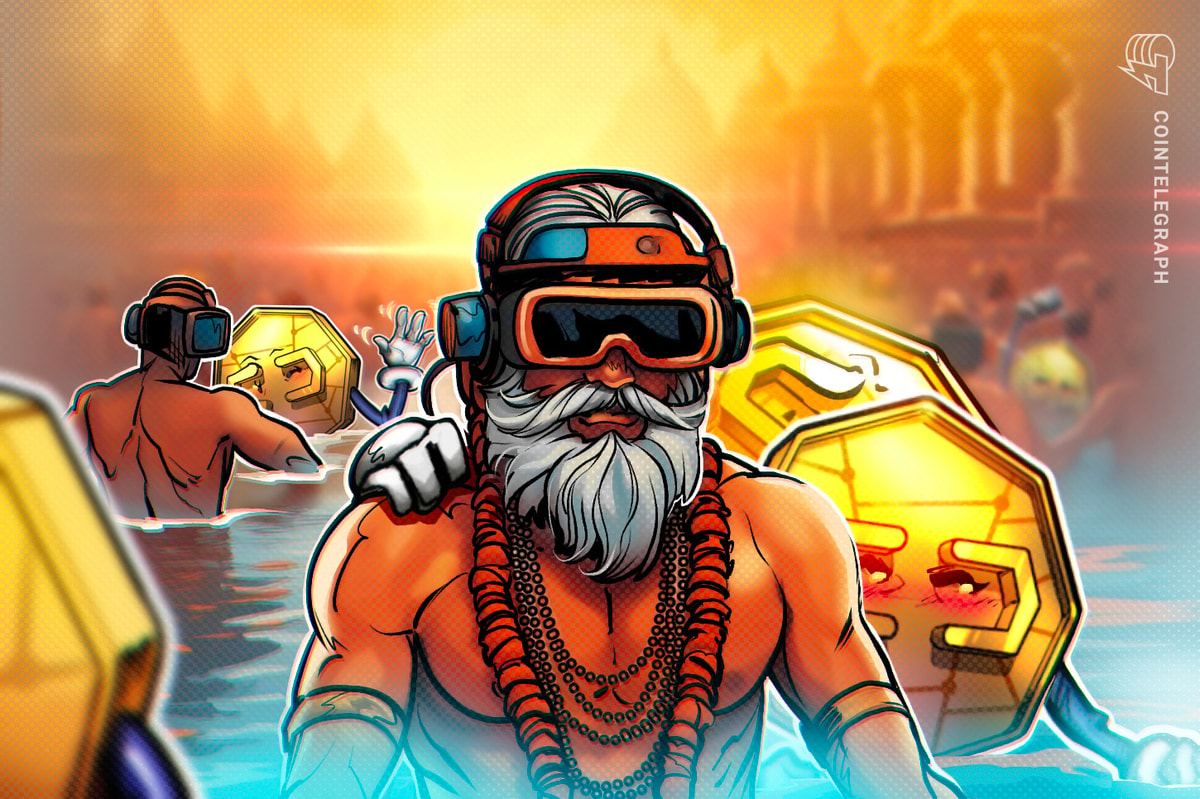Unprecedented Fusion of Tradition and Technology at MahaKumbh
Striking scenes unfolded as India wrapped up the MahaKumbh, an extraordinary Hindu assembly that takes place once every 144 years. Each day, an individual performed ritual dips in the Sangam — the sacred meeting point of the Ganga, Yamuna, and Sarasvati rivers — while distributing passport-sized images that represented “Digital Snan,” a concept symbolizing digital purification. A sprawling nine-acre camp showcased the essence of Hinduism through the ages, and numerous families experienced a comprehensive virtual tour of the MahaKumbh, complete with VR headsets and bottles of pure Sangam water delivered to their doorsteps. These innovative occurrences mark a historic first for the MahaKumbh, prompting an intriguing inquiry: Does this blend of technology and tradition provide insights into India’s metaverse future? Absolutely.
A Unique Embrace of Technology
India has always adopted technology in distinctive ways, often bypassing traditional phases of technological evolution. A prime example is the country’s swift transition to mobile-centric digital solutions, with many homes never having used a landline. As immersive technologies gain momentum, India is exhibiting its unique pattern of adoption. In recent years, there has been a significant increase in the digital transformation of religious practices across the nation. The VR Devotee app, introduced in 2016, allowed users to virtually participate in rituals and festivals from more than 150 temples, witnessing a notable 40% surge in user engagement during the COVID-19 pandemic. Recognizing this potential, the Indian government initiated the “Temple 360” platform in 2022, enabling virtual darshan from key pilgrimage locations. The unprecedented live streaming of the Puri Jagannath Rath Yatra in 2020, conducted without public attendance, attracted millions of online viewers, a trend seen across various Indian pilgrimages.
Significance of MahaKumbh’s Tech Integration
The incorporation of immersive technologies at MahaKumbh, one of Hinduism’s most revered gatherings attended by over 663 million pilgrims, underscores a significant cultural readiness for digital integration. If deeply rooted spiritual customs can adapt to include digital elements, it signals a broader acceptance of technology within the fabric of Indian culture.
Government Support for Emerging Technologies
Under the Digital India initiative, augmented reality (AR) and virtual reality (VR) are recognized as pivotal emerging technologies alongside artificial intelligence (AI), blockchain, and 5G. This acknowledgment is backed by tangible initiatives, such as the establishment of Centers of Excellence like VARCoE at IIT Bhubaneswar and projects aimed at fostering extended reality (XR) startups. In 2022, the MeitY Startup Hub collaborated with Meta to initiate the XR Startup Program, offering financial support to 16 startups. Additionally, Uttar Pradesh’s government recently unveiled a 3D VR experience center in Ayodhya, with several other religious sites like Kashi Vishwanath Dham and Maa Vaishno Devi Bhawan already implementing immersive experiences. This strategic focus could significantly enhance India’s XR adoption, leveraging the country’s rich cultural heritage.
Corporate Engagement in Immersive Technologies
India’s corporate landscape also reflects a growing readiness for the metaverse, with Reliance Industries spearheading this evolution under the leadership of Mukesh Ambani. Recently, Jio Platforms forged a strategic partnership with Polygon Labs to incorporate Web3 and blockchain functionalities into its extensive digital infrastructure. This collaboration holds considerable potential, as it aims to extend Web3 capabilities to Jio’s massive user base, which exceeds 482 million. Reliance’s commitment to immersive technologies is further evidenced by the launch of “Jio Glass,” an economical mixed-reality device tailored for Indian consumers. The company’s acquisition of Tesseract in 2019 and ongoing discussions with Meta highlight its long-term vision for immersive technology. Reliance’s strategic investments signal a promising future for digital experiences in India. Following the announcement with Polygon, Jio also introduced its mystery JioCoin, marking a significant milestone for the Indian Web3 sector. Additionally, the Indian Railway Catering and Tourism Corporation has begun issuing non-fungible tokens (NFTs) for train tickets on the Polygon blockchain for passengers journeying to the MahaKumbh festival, utilizing Polygon for its rapid processing and low transaction fees, thus demonstrating a mature approach to blockchain implementation in the country.
Mixed Reactions to Digitization of Sacred Experiences
However, not all views are favorable regarding the digitization of sacred rituals. The introduction of the “Digital Snan” service at Sangam, priced at 1,100 rupees, provoked backlash on social media, with critics arguing that such offerings commercialize spirituality, reducing sacred traditions to mere transactions. Furthermore, despite the global phenomenon sparked by Pokémon Go eight years ago, which showcased augmented reality’s potential to create cultural movements, the world has yet to see a comparable moment since then. This absence raises questions about whether immersive technologies will ever achieve the widespread acceptance that smartphones enjoy today. While mall VR arcades attract the curiosity of teenagers for isolated experiences, consistent usage patterns have not emerged outside select professional contexts.
Potential for a Culturally Rich Metaverse
What sets India’s potential metaverse apart from Western iterations is its deep-rooted cultural context, providing significant meaning to millions. While Silicon Valley’s focus leans towards virtual workspaces and digital asset speculation, India’s early metaverse applications emphasize democratizing access to culturally significant experiences. This culturally anchored approach may ultimately prove more sustainable, addressing authentic human needs for connection to heritage, participation in community rituals, and access to experiences that may otherwise be unattainable due to distance or other limitations. By focusing on these genuine needs, India’s metaverse initiatives may discover the essential purpose that has eluded mainstream adoption in other parts of the world.

